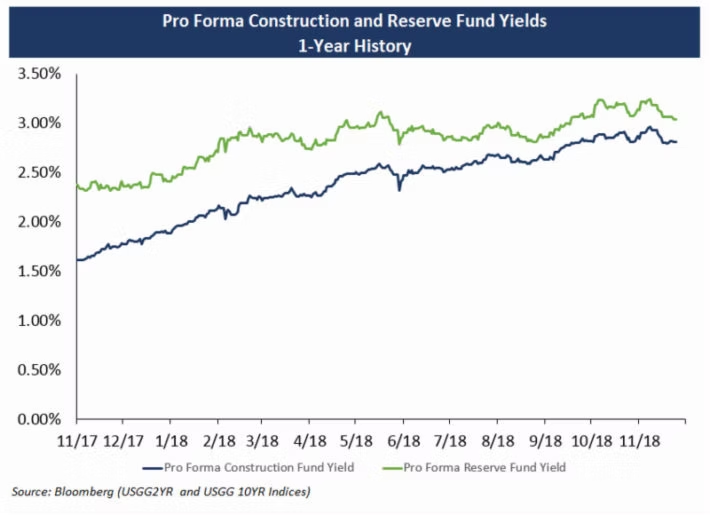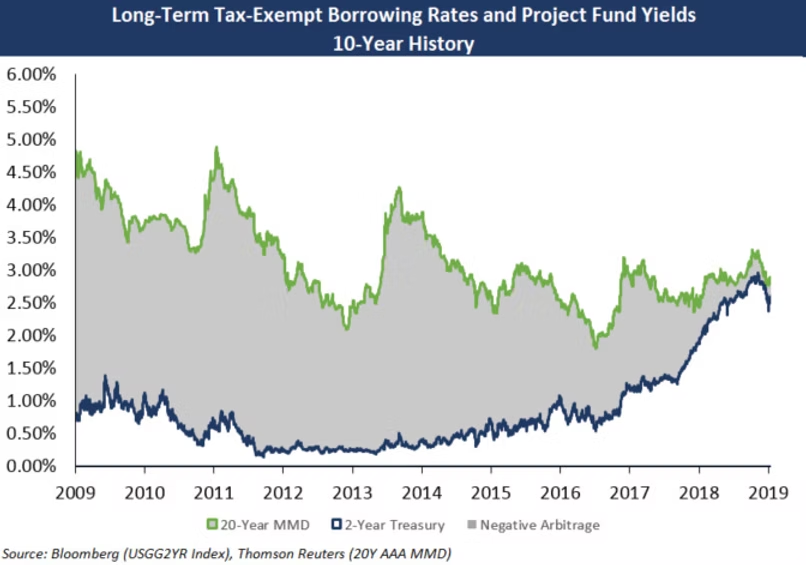The debt ceiling for the United States is currently suspended until March 1, 2019 and at that time, it will be set to the amount of debt on that day. Once that new limit is set, by design, the Treasury department will be legally prohibited from incurring any additional debt.
To create room for ongoing funding of government operations, the U.S. Treasury typically takes so called “extraordinary measures” to create room for debt under the debt ceiling. Included in these measures is suspending the sale of State and Local Government Securities (SLGS). Today SLGS are being purchased by issuers for taxable advanced refundings of tax-exempt bonds and, prior to the passage of tax reform legislation taking effect in 2018, they were also used for tax-exempt advanced refundings.
These extraordinary measures typically give the Treasury department some time and room to operate. Current estimates project this to last until sometime this summer. Once these measures are exhausted, the Treasury department will be unable to fund operations and debt service on existing Treasury debt. At or prior to this time, Congress must take action to prevent a default.
Historically, Congress has either acted to raise the debt limit or to suspend it again. In early January, Nancy Pelosi, the Speaker of the House of Representatives, proposed a rule package which included reinstating the “Gephardt rule”. This rule, which was previously in place from 1980 to 2011 with several periods of suspension, forces the debt ceiling to increase simultaneously whenever a budget is passed by the House. It would then be nearly impossible for the national debt to exceed the debt ceiling, and the Treasury would not need to take measures to decrease national debt, including suspending the purchasing of SLGS. This proposal was not voted upon by Congress.
Given the current state of the budgetary process in Washington, it is unlikely that Congress will act soon to take any precautionary actions. As such, we believe that it is likely that the SLGS window will close, possibly for an extended period of time. If the Treasury suspends the sale of SLGS, issuers will need to purchase alternative “open market“ securities for escrows that otherwise would have been eligible for SLGS. These open market escrow portfolios generally consist of U.S. Treasuries and Agencies, with parameters for eligible securities varying by indenture.
Blue Rose regularly serves as a bidding agent for open market escrows, which can prove more cost-effective than SLGS even when the SLGS window is open depending on the size and duration of escrow cash flows. If you are undertaking a refunding or defeasance transaction, we encourage you to reach out to us with indicative escrow cash flows to determine if an open market escrow could provide value, either through generating savings vs. SLGS or as a substitute for them in the event of a SLGS window closure.


About the Author:
Georgina Walleshauser, Analyst
Georgina joined Blue Rose in April 2017. She is responsible for providing analytical, research, and transactional support to senior managers serving higher education, non-profit, and government clients with debt advisory, derivatives advisory, and reinvestment services.



